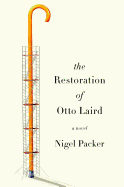
| Publisher: | St. Martin's Press | |
| Genre: | Fiction, Family Life | |
| ISBN: | 9781250071545 | |
| Pub Date: | November 2015 | |
| Price: | $25.99 |
| Fiction |
by Nigel Packer
In The Restoration of Otto Laird, Nigel Packer explores the relationship between people and the facades they create. A philosophical argument hidden in a rich, plot-driven narrative, the book begins when aging and reclusive architect Otto Laird discovers that one of his old buildings, Marlowe House, is being torn down. When he flies back to London to head an effort for its rescue, he's forced to deconstruct everything else from his previous life as a flawed husband, father and artist.
Packer's debut builds the perfect synthesis of character and theme, wherein Otto's megalithic concrete structure's demise stands in for the architect's failing health, body and soul. As he spends more and more time in Marlowe House and the posh, old London neighborhood, he reckons with the hard truth he'd spent his career avoiding: even the most beautiful and sturdy of structures break down in time.
Estranged from his son and still reeling from the long-ago death of his first wife, Otto wanders through the halls as though he's wandering through his own past. Everything in the building is a trigger for him, and as he rubs his hands along a tiled wall or falls asleep in the unfamiliar dark of his hotel room, Otto finds himself remembering more of his mistakes than his successes.
As Otto and Marlowe House move helplessly into the last days of both their lives, Packer takes his narrative back into Otto's past, so that someone--if not Otto--may take something positive away from man's hubris and shortcomings. --Josh Potter

| Publisher: | Minotaur | |
| Genre: | Amateur Sleuth, Fiction, Mystery & Detective, Cozy, Women Sleuths | |
| ISBN: | 9781250074539 | |
| Pub Date: | December 2015 | |
| Price: | $25.99 |
| Starred | Mystery & Thriller |
by Jane K. Cleland
It's nearly Christmastime in bucolic Rocky Point, N.H., and antiques dealer Josie Prescott is gearing up for her company's annual holiday bash. Having recently connected with a distant relative, Ian Bennington, Josie is thrilled when he appears in Rocky Point in time to attend her party. But the next day, when Ian doesn't show up for lunch with Josie or for a dinner date with her friend Lia, Josie begins to worry. Despite protests from the local police chief, Josie launches an investigation. Jane K. Cleland (Blood Rubies) stirs together a holiday confection of art theft, twinkle lights and murder in her 10th Josie Prescott mystery, Ornaments of Death.
Although Josie is an amateur sleuth (like most cozy-mystery protagonists), her day job as an antiques appraiser means she knows a thing or two about research. While fielding calls from customers who think they've found treasure in their attics, Josie dives into Ian's history and begins searching for his daughter, Becca, a marine biologist working nearby. Although Josie makes a few rookie mistakes, she does uncover vital information about Ian, Becca, Becca's dishonest ex-husband and two valuable miniature paintings that have also disappeared.
Readers of Cleland's series will enjoy repeat appearances by supporting characters, including Josie's colleagues and the auction-house cat, Hank. For first-time readers, Cleland gives enough context for a basic understanding of Josie's world. Josie is a likable heroine, and the mystery wraps up neatly--one might even say its ends are tied up in a festive bow. --Katie Noah Gibson, blogger at Cakes, Tea and Dreams
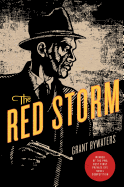
| Publisher: | Minotaur | |
| Genre: | Private Investigators, Fiction, Mystery & Detective, Historical, African American | |
| ISBN: | 9781250073075 | |
| Pub Date: | December 2015 | |
| Price: | $25.99 |
| Mystery & Thriller |
by Grant Bywaters
Grant Bywaters employs his expertise as a licensed private investigator in his first novel, The Red Storm. William Fletcher was a 1920s black prizefighter whose ambitions for the heavyweight title were frustrated by the prejudices of his day. After the end of his boxing career, he becomes a P.I. in New Orleans, a city Fletcher credits with a "more lax view on segregation." He struggles to make a living, though, so when a contact from his old life shows up more than 15 years later requesting help, Fletcher reluctantly agrees to investigate, even though Bill Storm is a wanted murderer. Storm wants to find his estranged daughter. But as soon as Fletcher contacts her, violence breaks out around both Fletcher and Zella Storm. What, exactly, has Storm gotten him into?
Fletcher is a loner, with racial tensions adding to the distinctive anti-authority stance his profession tends to take. Zella is a peppery character, with an ambitious career singing in French Quarter establishments that would rather she just take her clothes off. Bywaters evokes a recognizable New Orleans and surrounding swamps, and the police are hard beset by organized crime, both local and inbound from New York City. Fletcher may be just the man to help out, if he can keep himself and Zella alive. The Red Storm's plot is solid, but it is the setting in both time and place that distinguish this classically styled noir P.I. story, which Bywaters flavors with period slang as liberally as a Creole cook spices food. --Julia Jenkins, librarian and blogger at pagesofjulia
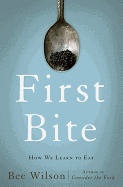
| Publisher: | Basic Books | |
| Genre: | Agriculture & Food, Social Science | |
| ISBN: | 9780465064984 | |
| Pub Date: | December 2015 | |
| Price: | $27.99 |
| Food & Wine |
by Bee Wilson
As physical nourishment, a social bonding agent and cultural identity, food is central to human life. Although tastes and cuisines vary wildly across cultures, nearly all of us form powerful habits and attitudes about food from early childhood. These learned behaviors and principles, as well as cultural messages and conversations about food, can have a powerful effect on the rest of our lives. Food writer and social historian Bee Wilson examines eating patterns in the context of weaning, baby food, family meals, eating disorders and nutrition in her fifth book, First Bite.
Wilson (Consider the Fork) begins with a simple premise: humans are born with an innate hunger for food, but nearly everything else that concerns food--tastes, aversions, habits, disorders, attitudes--is learned. There are hundreds of reasons that people relate to food in complicated, often unhealthy ways. However, she argues, it is possible to change some of that behavior, to make food "a daily source of delight rather than something to fight against." She draws on a variety of research to explore the complex relationship humans have with food, which often begins as early as toddlerhood.
Wilson makes the case for thoughtful eating, intentional meal planning and a willingness to experiment with new foods. First Bite is both a rich social history for those interested in the relationship people have with food and an encouraging word for harried parents hoping to expand their children's culinary horizons. Since the human need for food is constant and vital, Wilson points out, there is always the opportunity for change and growth--one bite at a time. --Katie Noah Gibson, blogger at Cakes, Tea and Dreams
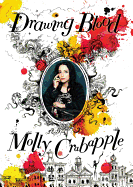
| Publisher: | Harper | |
| Genre: | Art, Biography & Autobiography, Artists, Architects, Photographers, Essays, Artists Books, Individual Artists | |
| ISBN: | 9780062323644 | |
| Pub Date: | December 2015 | |
| Price: | $29.99 |
| Biography & Memoir |
by Molly Crabapple
If anyone has visually captured New York City's post-9/11 zeitgeist, it is artist, illustrator, ex-Suicide Girl, burlesque queen and political activist Molly Crabapple (née Jennifer Caban, which she legally changed to the nickname inspired by her "sour disposition"). Raised in Far Rockaway in Queens, N.Y., by her artist mother, Crabapple committed to art at age four. At 17, she was already on her way to Paris, alone, to find her idol Toulouse Lautrec's Moulin Rouge. Splurging on a leather sketchbook, she drew everything she saw. When she returned to New York in August of 2001, she had a portfolio of work and a calling. A month later the city was no longer the city she knew.
Drawing Blood chronicles how Crabapple survived poverty and insecurity to become a successful artist and illustrator. She lounged provocatively for sleazy amateur photographers. She posted nude photos on the semi-pornographic Suicide Girls website. She joined burlesque troupes. She wiggled her way into the notorious downtown club the Box, which became "My muse. My Moulin Rouge." And through the hustling and degradation, she kept drawing--including up-close scenes of the Occupy Movement in Zuccotti Park and, with increasing political activism, visits to Guantanamo Bay and labor camps in Abu Dhabi.
Candid, earthy, romantic, funny, omnivorous, Drawing Blood is the story of a young artist on the make in a New York City. Illustrated with many of Crabapple's drawings, Drawing Blood is a portrait of a tough woman winning (finally) in a tough profession in the toughest of cities. --Bruce Jacobs, founding partner, Watermark Books & Cafe, Wichita, Kan.
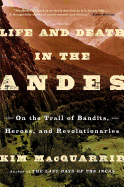
| Publisher: | Simon & Schuster | |
| Genre: | South America, History, Latin America | |
| ISBN: | 9781439168899 | |
| Pub Date: | December 2015 | |
| Price: | $32.50 |
| History |
by Kim MacQuarrie
Kim MacQuarrie (Last Days of the Incas) has long been fascinated by the vast region defined by the Andes Mountains. Having traveled and studied the length of these mountains, 4,500 miles of South America, he shares their stories in Life and Death in the Andes: On the Trail of Bandits, Heroes, and Revolutionaries.
Protagonists range over centuries and national borders, and include Pablo Escobar, the modern Colombian drug lord; Charles Darwin as an amateur naturalist in Ecuador's Galápagos Islands; the 1980s Shining Path guerrilla movement in Peru; a teenaged girl sacrificed by the Incas in the 1400s; Che Guevara, making his final stand in Bolivia; and Butch Cassidy and the Sundance Kid, whose lives likewise end in Bolivia. MacQuarrie explores cultural conflicts with sensitivity, as in examining Hiram Bingham, the "discoverer" of the Machu Picchu ruins in Peru, who conveniently ignored earlier local knowledge of the site. Finally, MacQuarrie introduces the Yámana people of the southernmost points of Chile and Argentina, and meets with the last speaker of the Yámana language.
Life and Death in the Andes is captivating, its fascinating tales told with enthusiasm as well as careful research when dealing with relatively straightforward facts or with the story of "Juanita"--a young woman who lived in the 15th century--told as "an imaginative reconstruction based upon historical, ethnographic, forensic, and archaeological evidence." This engaging history of dramatic stories and arresting characters is entertaining as well as informative, and its readability serves to recommend it widely. --Julia Jenkins, librarian and blogger at pagesofjulia
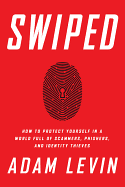
| Publisher: | PublicAffairs | |
| Genre: | Security, Online Safety & Privacy, Computers | |
| ISBN: | 9781610395878 | |
| Pub Date: | November 2015 | |
| Price: | $24.99 |
| Starred | Business & Economics |
by Adam Levin
"Every two seconds. That was the pace at which Americans became victims of identity theft in 2013--and that's just the cases we know about." This is Adam Levin's warning to readers in Swiped: How to Protect Yourself in a World Full of Scammers, Phishers, and Identity Thieves. But his advice is not about how to keep your information completely hidden. He explains that if you're in any way plugged into the commerce of daily life, your information is almost certainly already out there, and that it's only a matter of time before identity thieves strike. His advice is for "realists"--people willing to acknowledge the inevitability and take practical measures to protect themselves.
While personal security can be a dry subject, Levin makes his case through intriguing anecdotes, like that of a teenage cashier ("Alex from Target") who became world-famous overnight when a stranger posted his photo to Twitter, and disturbing stories of adult children whose parents destroyed their credit under their noses. He argues that the current underfunding of the IRS leaves gaping vulnerabilities in our system (a problem that's estimated to lose the government $21 billion to identity thieves over the next five years). Most importantly, he offers straightforward advice that any layperson can use.
A founder and chairman of Identity Theft 911 and Credit.com, Levin has made informing and protecting consumers the focus of his career. As he stresses throughout Swiped, identity theft is the fastest-growing crime in the United States, and one that no one can afford to ignore. --Annie Atherton
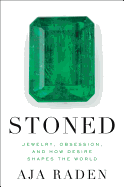
| Publisher: | Ecco | |
| Genre: | History, Fashion, Social History, History & Criticism, Design | |
| ISBN: | 9780062334695 | |
| Pub Date: | December 2015 | |
| Price: | $27.99 |
| Social Science |
by Aja Raden
Aja Raden--jewelry designer at Tacori in Los Angeles, former House of Kahn auction director, historian and scientist--pretty much takes on the full history of the world in a fascinating story of the human passion for jewelry. Her title, Stoned, is apt: a slightly irreverent description of our addiction to glitter and the violent retribution men (and women) have pursued in finding, taking and hoarding it. In a clever, funny narrative laced with slang, footnotes and asides, Raden traces the impact of the quest for diamonds, emeralds, pearls and other precious stones on the political geography of the world. She focuses not so much on gold and silver (often just the infrastructure for elaborate settings), but rather on the gems that put the jewel in jewelry. Monarchs, explorers, conquerors, tycoons, marketers and scientists get their moment in her crosshairs and take their hits.
Stoned is not only an omnibus, sometimes snarky world history. Raden also explores the origins of jewels and the art of jewelry-making. She digs into the psychology behind our coveting: "You want it because everybody else wants it, and everybody else wants it because someone else has it. Nobody wants it if everyone can have it." Finally, she concludes with a history of the wristwatch--not just as jewelry, but as technology that helped decide victory in World War I and soon may strap access to everything on our wrists. Stoned is an intriguing take on world history with plenty of adornment and anecdote to entertain us along the way. --Bruce Jacobs, founding partner, Watermark Books & Cafe, Wichita, Kan.
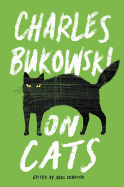
| Publisher: | Ecco | |
| Genre: | Letters, Literary Collections, Pets, General, American, Cats | |
| ISBN: | 9780062395993 | |
| Pub Date: | December 2015 | |
| Price: | $25.99 |
| Essays & Criticism |
by Charles Bukowski
Had there been a YouTube when Charles Bukowski was writing at his peak and sheltering a stream of stray cats, his musings on cat behavior and personality might have been lost in the endless cat video galaxy. Instead, he scrawled short verse and prose poems honoring whichever felines happened to find his door. He was a sucker for cats--almost as much as for whiskey, women and writing. On Cats is the second of a trilogy of selected Bukowski work (after On Writing and in anticipation of 2016's On Love), published on the anniversary of what would have been his 95th year. The poems cover dozens of his cats from the 1950s until his death in 1994, but they usually come back to the same observation: cats are remarkably resilient, self-sufficient and indifferent to people--the same foundation on which Bukowski built his writing career. As he writes in his later years, "They sleep, baby.... They know there's nothing to get excited about. The next meal. And a little something to kill now and then."
In true Bukowski form, his admiration for cats is presented with crude candor and plenty of raunch (one poem is titled "Looking at the Cat's Balls"). He frequently rescues his cats from fights and unknown nocturnal accidents. When the vet bills eat into his drinking money, he rants: " 'Jesus,' I told the vet, 'this is a ten-year-old/ de-balled alley cat. I can get a dozen of these for/ nothing.' " Aware that his cat poems are more amusement than literature, he concludes "My Cat, the Writer" with this self-deprecating insight:
listen, relax, you've read
worse
poems than
this...
and I've written
them."
--Bruce Jacobs, founding partner, Watermark Books & Cafe, Wichita, Kan.
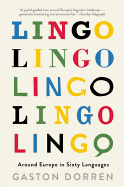
| Publisher: | Atlantic Monthly Press | |
| Genre: | Travel, General, Language Arts & Disciplines, Europe, Linguistics | |
| ISBN: | 9780802124074 | |
| Pub Date: | December 2015 | |
| Price: | $25 |
| Essays & Criticism |
by Gaston Dorren
Languages have been shaped by geography, wars, political ideologies and policies, and their proximity to other languages. In Lingo: Around Europe in Sixty Languages, his first book translated into English, Dutch linguist and journalist Gaston Dorren offers what he calls "an amuse-bouche" of European language and linguistics, "a guidebook of sorts, but in no sense an encyclopedia."
Quirks of particular languages occupy some of his chapters: the profusion of belittling diminutives for women in Italian; awkward counting systems; the linguistic effects of mountains and the "astonishingly ornate" word forms of Welsh. In others, Dorren uses one language to illuminate a broader topic, such as the ongoing disappearance of grammatical cases across Europe. He is an enthusiastic polyglot who can speak six languages and read nine more, and although he sees many ways in which Europeans could overcome some of their linguistic differences, much of his book tells the story of a culturally fragmented collection of peoples devoted to staying that way. For example, he notes that there is no such thing as Norwegian, only regional dialects and four written forms "ranging from 'moderate' (more Danish) to 'radical' (less so)." Two of these written forms are official. Both are taught in their schools, including the two sets of spellings. "There are even Norwegian-Norwegian dictionaries."
For language lovers and those who enjoy obscure facts, European culture and politics--or all of the above--Lingo will be an entertaining book to dip into, a tasting menu of the pleasures of languages. --Sara Catterall
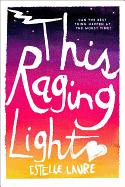
| Publisher: | Houghton Mifflin Harcourt | |
| Genre: | Friendship, Love & Romance, Social Issues, Family, Juvenile Fiction, Siblings, Parents | |
| ISBN: | 9780544534292 | |
| Pub Date: | December 2015 | |
| Price: | $17.99 |
| Starred | Children's & Young Adult |
by Estelle Laure
High school senior Lucille Bennett mothers her nine-year-old sister, Wren, because she has no choice--her parents are AWOL. Her mom "needed a break from everything," and said she'd be back in two weeks, but it's Day 14 and there's no sign of her. And, as readers learn in bits and pieces, Lucille's too-cool rock 'n' roll father was checked into a mental facility after choking her mother; she doesn't even know if he's still in New Jersey. To complicate things further, Lucille has fallen "desperately, never-to-recover, twisted-up sick" in love with her best friend Eden's handsome, sonnet-worthy, taken twin brother, Digby, a boy she's known since she was seven but who lately makes "a fumbling moronic moron out of me, a full-on half-wit." More awkward still, it's increasingly difficult to hide the fact that she and her little sister are living on their own as the days turn into months.
Lucille's fresh, first-person voice spills over with metaphor, poetically capturing her emotional landscape with force and fury, frantic love and absolute exhaustion. Lucille needs to keep it together for Wren, and represses her emotions to such a degree that they occasionally erupt in the wild colors of her paintings, in her passion for Digby and in angry outbursts that only serve to alienate the ones she loves. Debut author Estelle Laure's This Raging Light starts with abandonment but ends with people caring for people, and the voice is tough and tender in equal measure. --Karin Snelson, children's & YA editor, Shelf Awareness
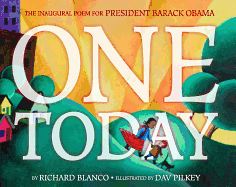
| Publisher: | Little, Brown | |
| Genre: | People & Places, United States, Holidays & Celebrations, United States - General, Politics & Government, Juvenile Fiction, Historical, Patriotic Holidays | |
| ISBN: | 9780316371445 | |
| Pub Date: | November 2015 | |
| Price: | $18 |
| Children's & Young Adult |
by Richard Blanco, illust. by Dav Pilkey
The award-winning wordsmith Richard Blanco ("Made in Cuba, assembled in Spain, imported to the USA," he says) read his hopeful poem "One Today" to a crowd of one million for President Obama's second inauguration in 2013. In One Today, a picture-book ode to America, his soaring words are gloriously illustrated in jewel-toned acrylics and india ink by Captain Underpants creator and Caldecott Honor recipient Dav Pilkey (The Paperboy).
The poem begins "One sun rose on us today, kindled over our shores,/ peeking over the Smokies, greeting the faces/ of the Great Lakes, spreading a simple truth/ across the Great Plains, then charging across the Rockies." Blanco's hypnotically lyrical poem spans "one today," and that day is visually interpreted as sunrise to moonrise, and, with a little poetic license, seasonal shifts. Readers follow the meanderings of two children--one white, one black--and their black cat as they stay busy in the bustling city while their mother works at a local market. They draw with chalk on sidewalks, read books and watch boats until they rejoin their mother at the end of her shift.
Blanco celebrates universal human experiences--the light that wakes us, a morning yawn, the ground we walk on, one sky, one moon: "All of us as vital as the one light we move through...." He gracefully weaves his own childhood into the narrative as well, such as his mother's work as a grocery clerk, his father cutting sugar cane, his Spanish-speaking upbringing. This creative, moving fusion of poetry and painting is a lovely, thoughtful homage to the best parts of America. --Karin Snelson, children's & YA editor, Shelf Awareness